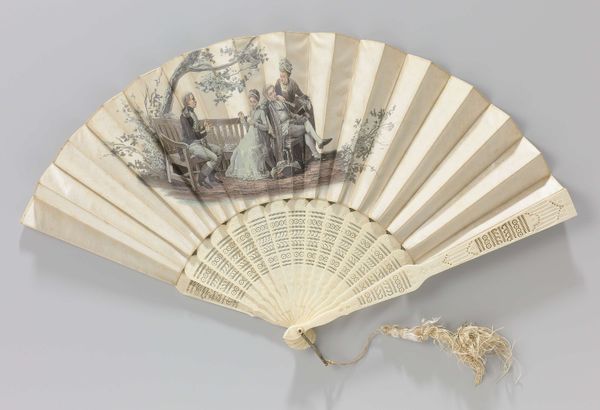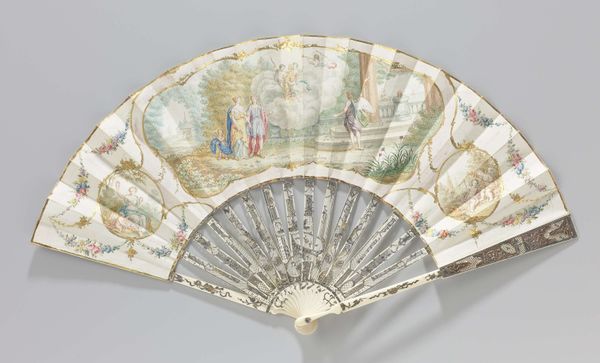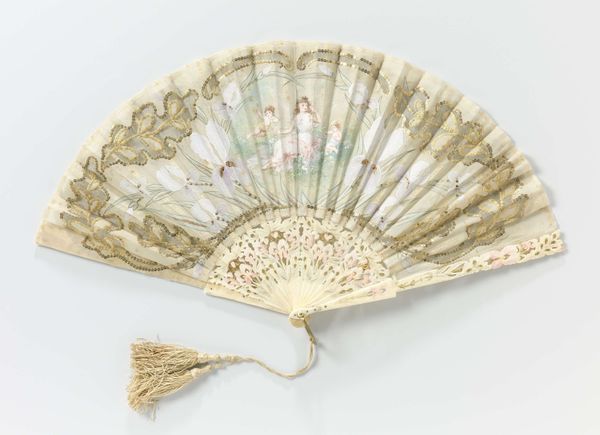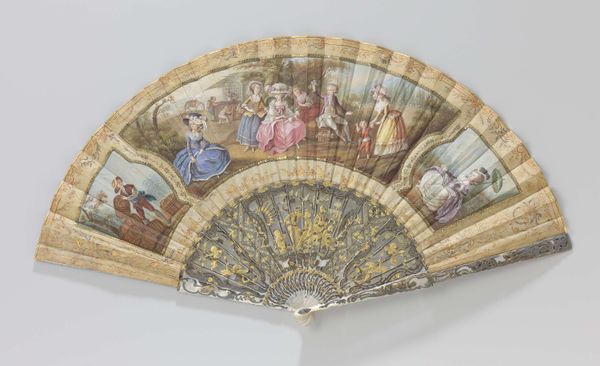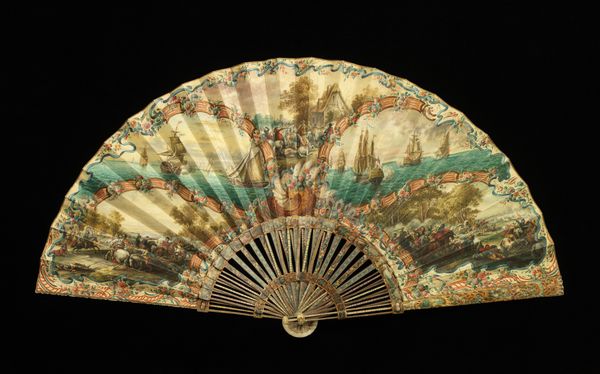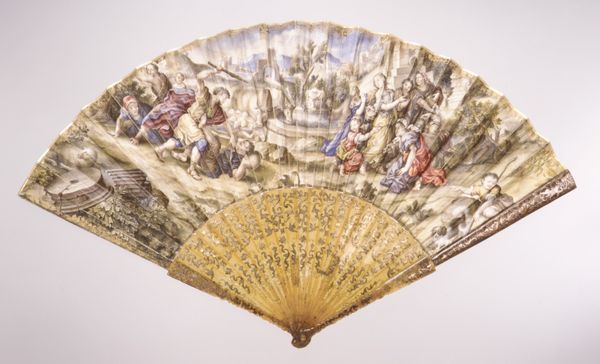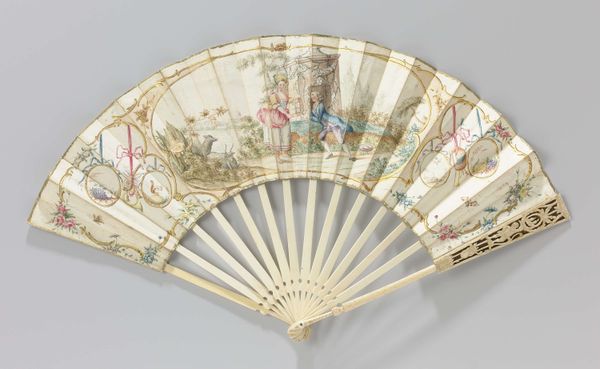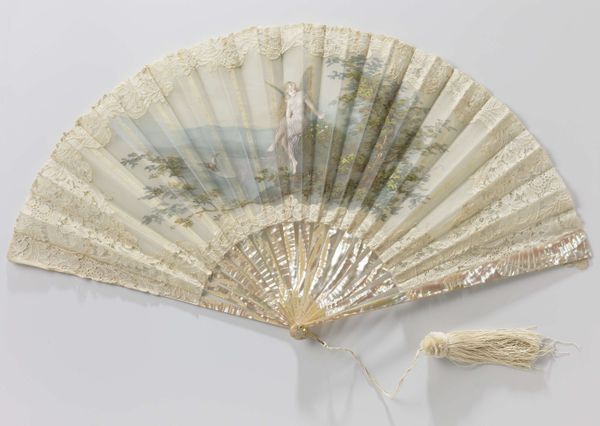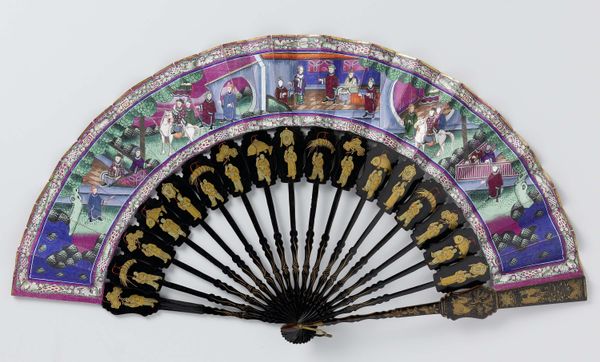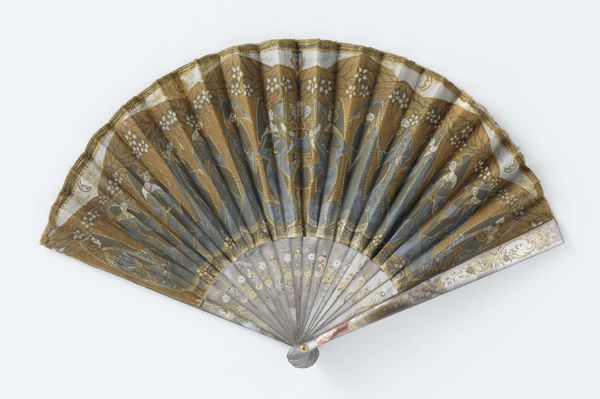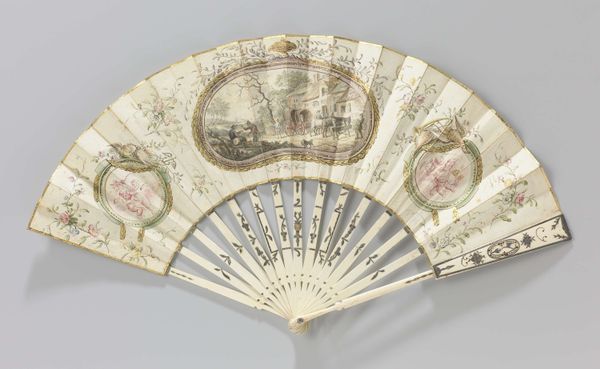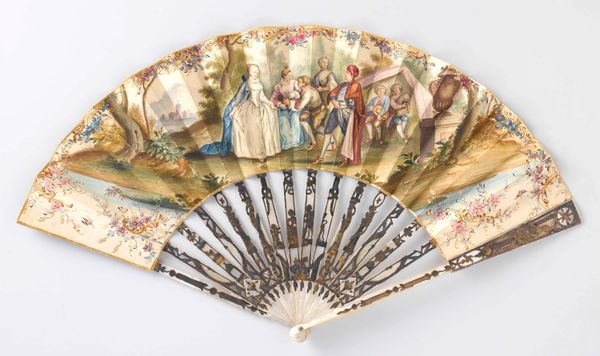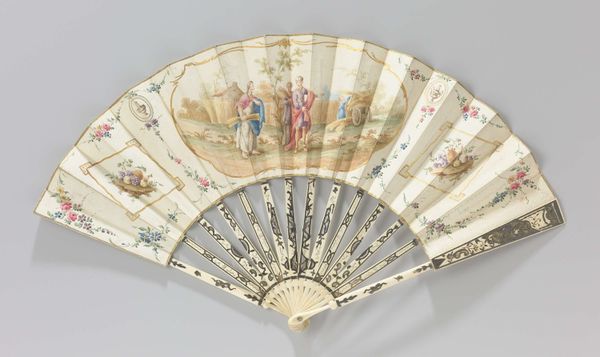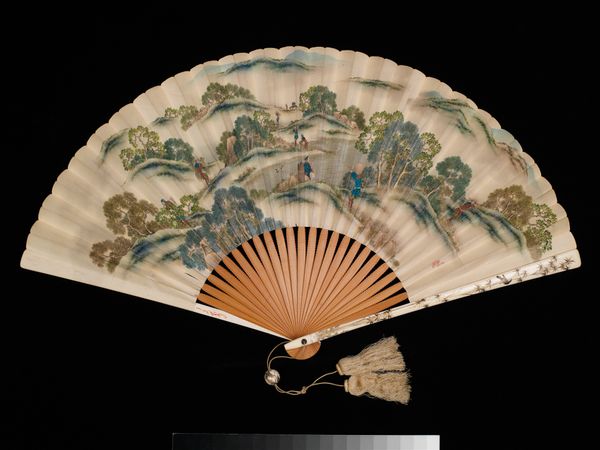
Vouwwaaier met blad van groen gaas waarop een cartouche van zwarte zijde met in olieverf een staande man in neo-rococokostuum, waarnaast en een zittende vrouw op een bank in een tuin, op ajour en in reliëf gesneden, met bladgoud ingelegd en beschilderd montuur van schildpad(?) c. 1900 - 1920
0:00
0:00
Dimensions: span 37.5 cm, length 21 cm
Copyright: Rijks Museum: Open Domain
Curator: What immediately strikes me is the overt artificiality of this fan. The depicted figures feel decidedly staged. Editor: Indeed. This piece, created circa 1900-1920, is listed as "Vouwwaaier met blad van groen gaas waarop een cartouche van zwarte zijde met in olieverf een staande man in neo-rococokostuum, waarnaast en een zittende vrouw op een bank in een tuin, op ajour en in relief gesneden, met bladgoud ingelegd en beschilderd montuur van schildpad(?)." Quite a mouthful! Curator: Exactly! And just consider all the constituent parts listed in that description. The interplay of these materials creates such a unique whole. The green gauze layered with black silk provides a subtle color interplay as the support for that miniature oil painting... It echoes the contrivances present in Rococo's emphasis on artificial paradise. Editor: And that is perfectly executed through mixed media! The handle and frame speak of intricate craftsmanship and a tactile opulence. Gold leaf inlay and painted tortoise shell are expensive materials indicating the work was produced for consumption by the leisure class. Curator: It evokes a lost world of elaborate rituals, doesn't it? The figures, positioned in what is supposed to be a serene landscape, look incredibly uncomfortable. The artist has composed the work in such a way as to make us acutely aware of their posturing and its underlying function. This awareness seems to hint at the beginning of that world's end... Editor: I see your point. We shouldn't ignore, though, the fan’s more quotidian function as a tool of embodied labor, providing the wielder an opportunity to participate in the social currency of display. I would bet this fan and others like it were status symbols produced en masse for the entertainment of the bourgeoisie. Curator: I concede the industrial elements that may factor into this, but this tension is central to understanding the appeal of Rococo-inspired aesthetics long after their time. The visual dance this fan proposes makes the viewer complicit. It becomes a complex microcosm of that cultural moment’s values, all held within one small object. Editor: It certainly is something to contemplate. Thank you for that engaging dissection, truly an art historical excavation into this singular, opulent work of art.
Comments
No comments
Be the first to comment and join the conversation on the ultimate creative platform.
